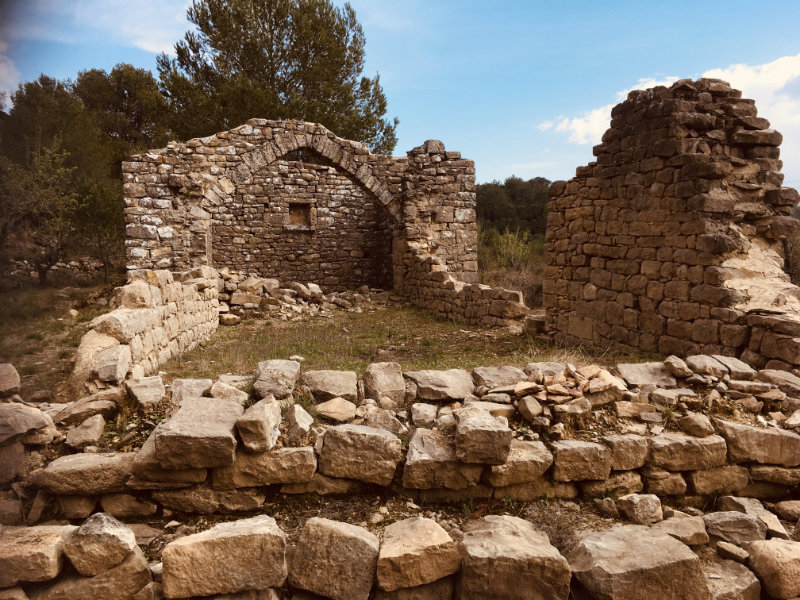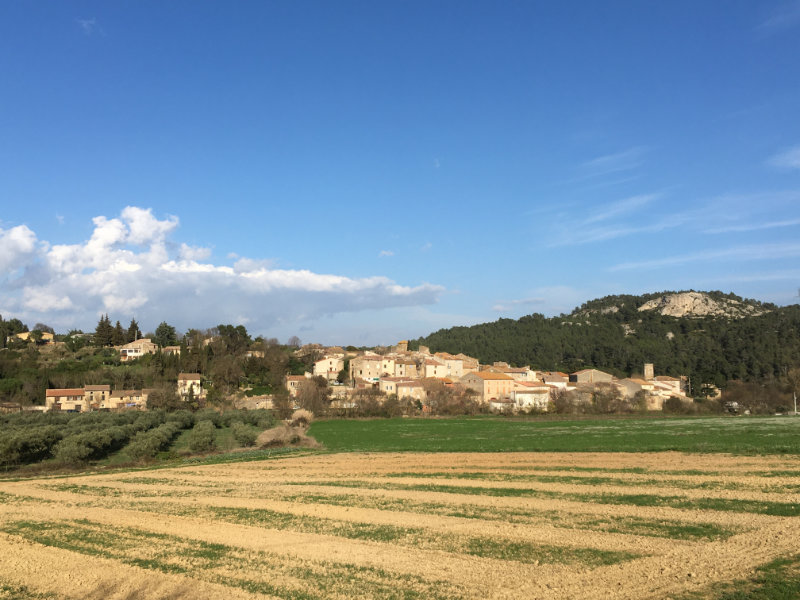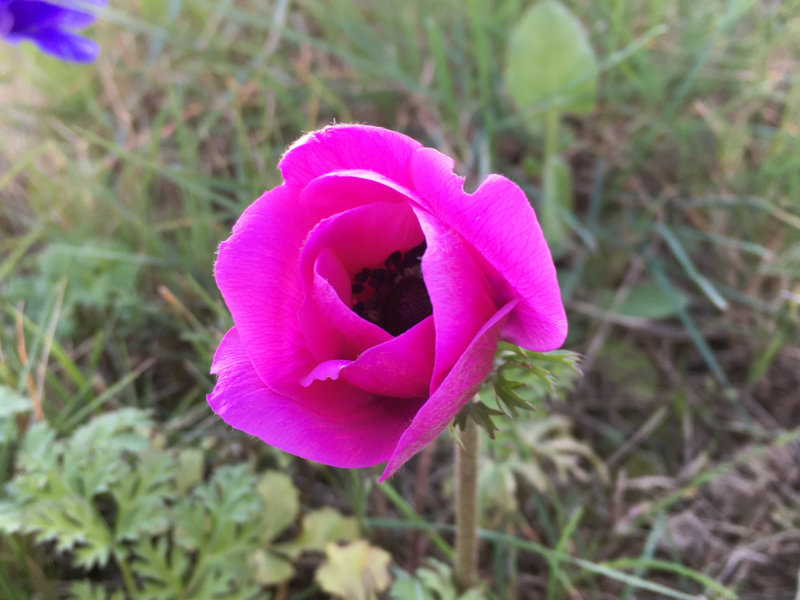Spring has arrived in earnest in Languedoc, and I think it is high time that I shared some of the marvels of nature with you – all too soon spring will turn into summer :)!!
Earlier this week, I went for a walk with my camera and a couple of friends. The walk started on what had been the old road which connected Saint-Chinian with Cebazan. Have a look at the map below – I parked the car at the “purple” crossroads, where you see 241. Here is a link to the map at Geoportail, in case you want to explore a little more. The purple line which loops around and passes 229 and 277 follows the walk we took.

The markings along the walk are in blue, hence the title of this post.

And here is the first of many plants which are in full flower right now: euphorbia. I will try to give you plant names wherever possible, but my knowledge of wildflowers is somewhat limited.

Not long into the walk there are some spectacular views of Cebazan in the distance.

The scenery is beautiful!, Unfortunately, the camera does not really do it justice. More flowers along the way: a different type of euphorbia, and my first sighting, this year, of cistus flowers, and spanish broom. The long spears are the buds of spanish broom, just before it bursts into flower. Another week or so, and the hillsides will be covered with fragrant, yellow blooms!
Here is another view, down the valley, in the general direction of Cebazan. These are the ruins of a rather large building, with the walls of a tower still standing. There’s a little window in the attic part of the tower – it might have been for a pigeon loft. If you look carefully, there’s a rim of slate all the way around the outside, perhaps to stop rodents climbing up the walls?

Here is some wild thyme, with almost pure white flowers. Usually thyme flowers are pink. I wonder if it has to do with the mineral content of the soil?

The next part of the walk involved a long-ish climb over a very rocky track. It was almost as if someone had poured a huge amount of limestone rocks down the side of the hill. In all likelihood, the stones were cleared from the surrounding fields in times gone by, and simply piled up, forming a river of stone.
At the top of the climb we rejoined a more level path, and although this shrub was not flowering, its berries looked lovely. The plant is a juniperus oxycedrus, and whilst the berries are not the juniper berries used to flavour gin and various other European dishes, they are comestible if used very ripe.

Next we came to a beautiful capitelle, one of the shelters built from only the stones found nearby, and without any mortar! This is the capitelle marked on the map, just above Le Bousquet.

I had walked past the capitelle in February, and made a mental note to come back when the almond trees were in flower, but somehow the note got mis-filed. 🙂 It is still very pretty with the trees just leaving out.
The path then rounded a corner, and became more open as it passed through some vineyards. Seeing the vine leaves emerge always cheers me up no end!
More flowers to be seen – none of us knew this plant, and I still don’t know what it is – the leaves are almost like those on an apple or pear tree, only smaller, but the flowers bear no resemblance. If any of you know, please write the name in the comments box below.

The path rounded another corner, and there was another capitelle, I guess it’s the second one, which is marked on the map, although there are a few others along the way, some of them half fallen down.

There was an extra attraction to this capitelle – I am not going to hazard a guess as to what make this might have been. 🙂 The body is still very strong – these old cars were incredibly heavy!
The view from the gap in the wall is just wonderful, and it includes my favourite little hut in the middle of the vineyards:

A semi-abandoned field yielded lots of interesting wildflowers: a tassel hyacinth, two kinds of dandelions, an orchid (cephalantera longifolia), and a clover like flower (anthyllis vulneraria).
Further along there was an asphodel, all by itself:

This unknown tree or shrub was flowering in an amazing profusion!

This thyme plant has the more typically pink flowers! Can you spot the bee?

The almonds are already well advanced:

And the judas trees are still in full flower:
The path was heading towards the spot where the car was parked. But there were still some surprises, such as the plant below. It looks like an orchid, but if I remember from the botanical walk in Cruzy last year, it is a parasite, which grows on the roots of another plant. Hence the brownish colour, as the plant cannot make any chlorophyll.

There must have been a fire on this field, perhaps only last year. The view into the distance is absolutely amazing!

A little abandoned building along the path…

… a beautiful blue iris…

… and some fragrant lilac…

… and then the path led back to the car! Except for the climb up the rocky “river” the walk is very easy. There is a way to bypass that climb, look out for the thin orange/brown line on the map. At normal speed the walk takes around an hour to complete; with lots of stops to take photographs it took 90 minutes. On your next visit to St Chinian you should try this walk. It is well worth it!!
Share this through your favourite media:








































































